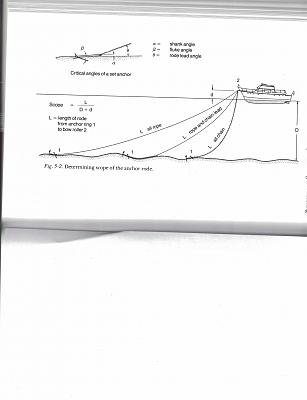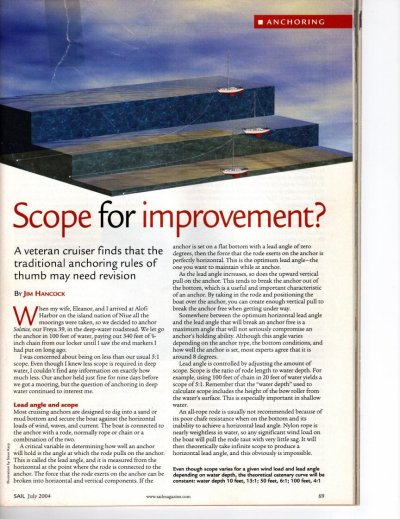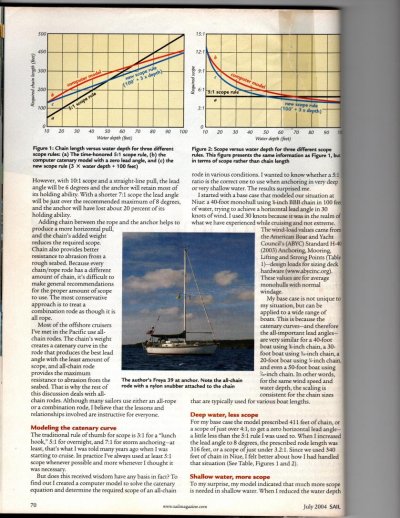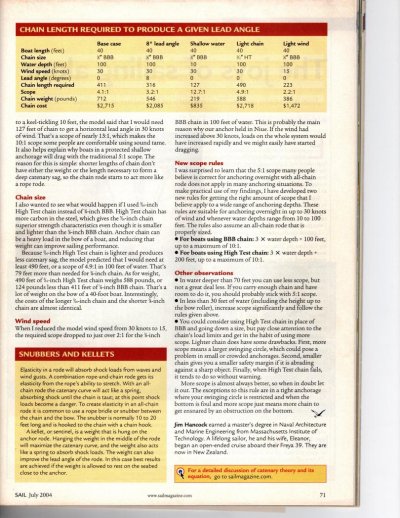O C Diver
Guru
- Joined
- Dec 16, 2010
- Messages
- 12,878
- Location
- USA
- Vessel Name
- Slow Hand
- Vessel Make
- Cherubini Independence 45

In my perfect anchoring scenario, the first 6' of chain are never lifted off the seabed or buried in the mud with the shank. While it doesn't completely eliminate the shock effect, the jerk isn't trying to break the anchor out.
Ted





